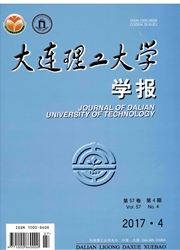

 中文摘要:
中文摘要:
蒸汽在过冷表面进行滴状冷凝时的初始液滴形成机理一直是悬而未决的问题.应用电子探针和扫描电镜两种方法对水蒸气冷凝前后镁表面上化学成分的变化进行了检测,发现冷凝后镁表面上氧含量明显增加,而且随着过冷度和冷凝时间的增加而增加.为了深入分析氧含量的增加是整个表面都反应造成的还是仅局部反应导致的,建立了镁与凝液反应的动力学关系,并推算出初始液滴所占面积分率远小于1的结果.同时电子探针的扫描检测结果证明氧元素在镁表面上的分布是不均匀的,凝液所占面积分率的图像处理结果与动力学计算结果相吻合.因此,初始形成的冷凝液仅在表面的局部区域产生,不是以薄液膜的形式覆盖表面,即滴状冷凝初始液滴的形成机理在纳米尺度下符合固定成核中心假说.
 英文摘要:
英文摘要:
The mechanism of formation of initial droplets for dropwise condensation is still in suspense. An electron probe microanalyzer (EPMA) and scanning electron microscope (SEM) were used to scan the variation of the chemical compositions on the magnesium surfaces before and after the initial condensation. The results show that the oxygen content on the test surfaces increases with subcooling and condensation time obviously after the initial dropwise condensation. In order to further analyze the variation of oxygen content occurring on the whole surface or only at the partial locations, the reaction dynamic relationship of magnesium and condensate was founded. And the calculated result indicates that the area ratio occupied by condensate is less than 1. At the same time, the detected results of EMPA and SEM show that oxygen on the test surface distributes non-uniformly, the area ratios occupied by initial condensate calculated with the reaction dynamic equation agree well with those from the image analysis. Therefore, the initial condensate forms only in partial positions and doesn't cover the whole surface in the form of film. As a result, the mechanism of formation of initial droplets for dropwise condensation accords with the hypothesis of nucleation sites in nano-meter scale.
 同期刊论文项目
同期刊论文项目
 同项目期刊论文
同项目期刊论文
 期刊信息
期刊信息
